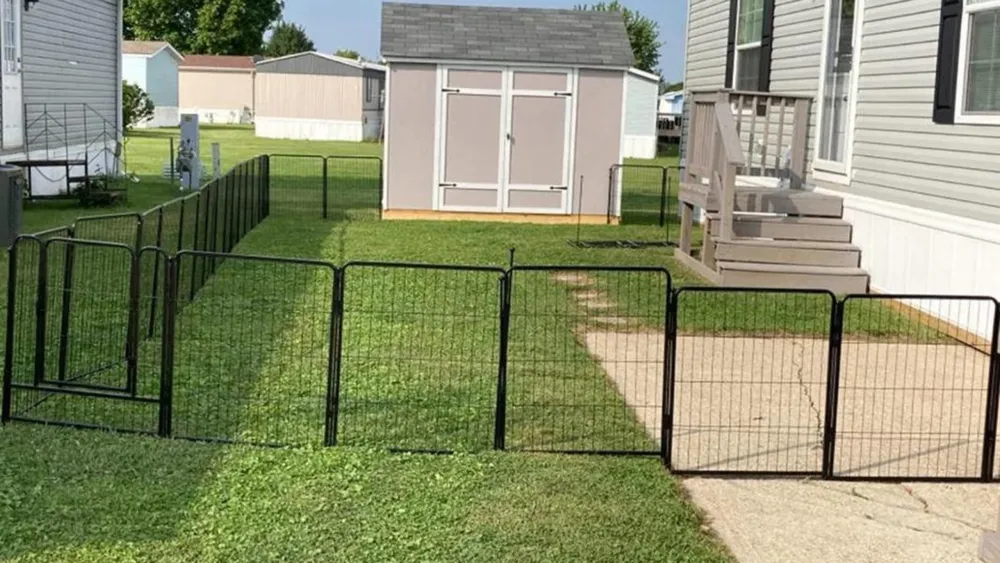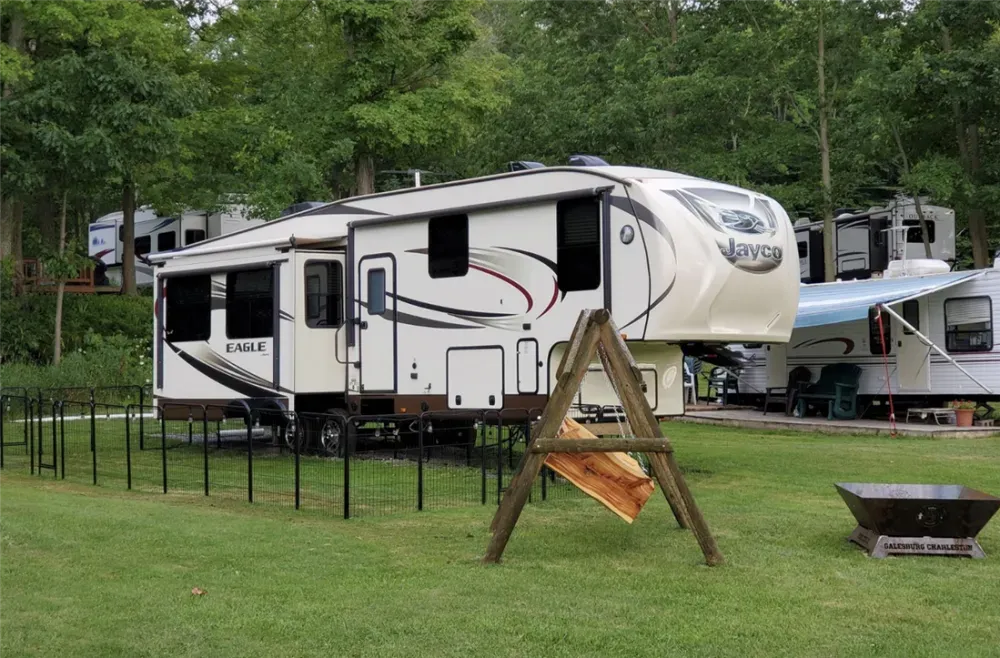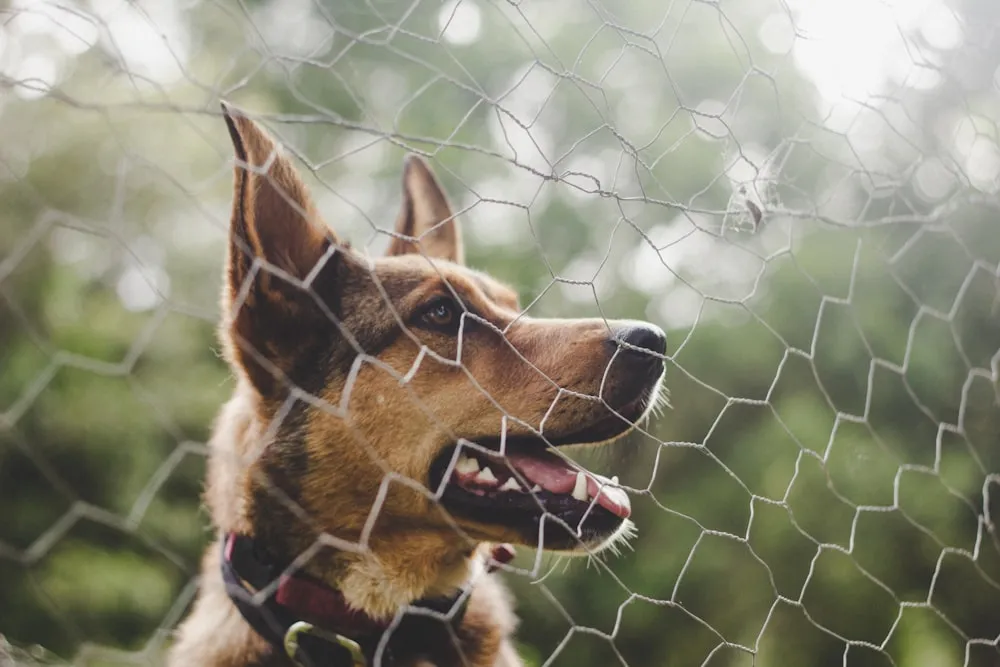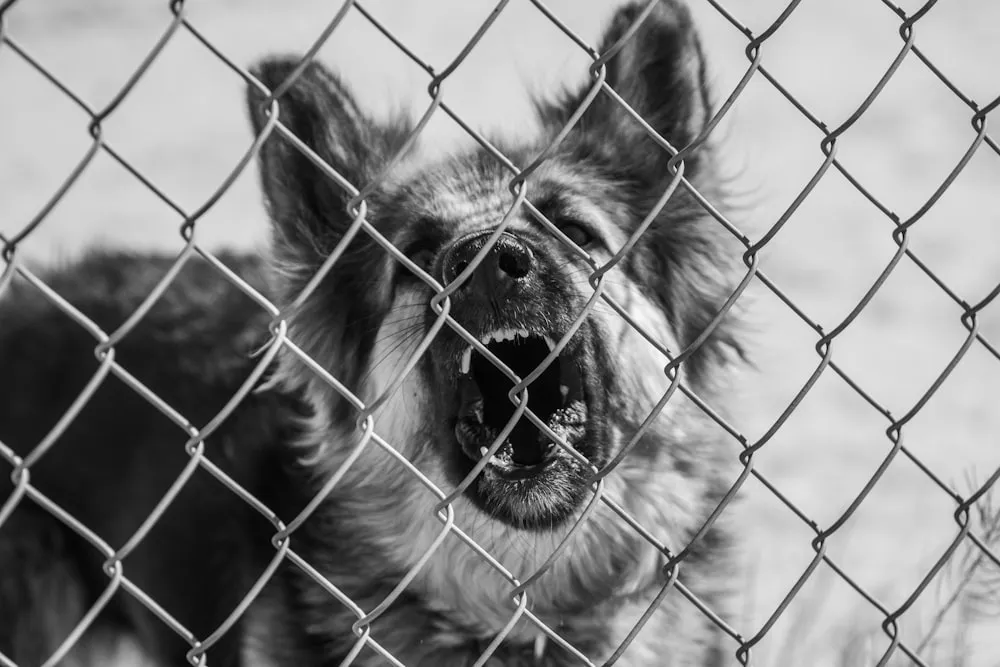Camping with your furry friend can be a fun and rewarding experience for both you and your dog. However, keeping your dog safe and secure while camping is important to ensure a stress-free trip. That's where a dog fence for camping comes in handy. It provides a designated and secure area for your dog to play, rest, and relax while you enjoy the great outdoors.

There are various types of dog fences suitable for camping, including portable and permanent options. Portable dog fences are lightweight, easy to set up and take down, and can be transported easily. Permanent dog fences, on the other hand, are more durable and can withstand harsh weather conditions. When choosing a dog fence for camping, it's important to consider factors such as the size and breed of your dog, the camping location, and your budget.
Key Takeaways
- A dog fence for camping provides a designated and secure area for your dog to play, rest, and relax while camping.
- There are various types of dog fences suitable for camping, including portable and permanent options.
- When choosing a dog fence for camping, it's important to consider factors such as the size and breed of your dog, the camping location, and your budget.
Types of Dog Fences for Camping
When it comes to camping with dogs, it's important to keep them safe and contained. There are several types of dog fences available, each with their own pros and cons. In this section, we'll explore some of the most common types of dog fences for camping.
Portable Electric Fences
Portable electric fences are a popular choice for camping because they are lightweight and easy to set up. They work by emitting a small shock when the dog tries to cross the boundary, which trains the dog to stay within the designated area.
One popular option is the SpotOn GPS Fence, which uses GPS technology to create a virtual fence around the camping area. It's a great option for RVers who want to keep their dogs safe and secure while traveling.
Freestanding Playpens
Freestanding playpens are another popular option for camping with dogs. They are usually made of lightweight materials like mesh or fabric, and can be easily assembled and disassembled.
One great option is the IRIS 34" Exercise 8-Panel Pet Playpen, which is ideal for small or medium-sized dogs. It features several sections of fencing, so you can make the play area larger or smaller depending on your needs.
Tethering Systems
Tethering systems are a good choice for dogs who are well-behaved and won't try to escape. They consist of a leash or cable that is attached to a stake or tree, allowing the dog to move around within a designated area.
One popular option is the BV Pet 60 Feet Trolley System, which features a 60-foot cable and a weather-resistant coating. It's a great option for camping because it allows the dog to move around freely while still remaining safely tethered.
Overall, there are several types of dog fences available for camping, each with their own unique features and benefits. It's important to choose the right type of fence for your dog based on their size, behavior, and camping environment.
Factors to Consider When Choosing a Dog Fence

When camping with your furry friend, it's important to keep them safe and secure. A dog fence can provide a designated area for your dog to play and relax without the risk of running off or getting lost. Here are some factors to consider when choosing a dog fence for camping.
Size and Breed of Dog
The size and breed of your dog will play a significant role in determining the appropriate fence size. Larger dogs will require a taller and sturdier fence, while smaller dogs may be content with a shorter and lighter fence. It's important to consider the jumping ability of your dog as well. Breeds such as Greyhounds and Border Collies are known for their jumping ability and may require a higher fence to keep them contained.
Campsite Environment
The campsite environment will also play a role in determining the appropriate fence for your dog. If the campsite is located in a wooded area, a fence with a solid bottom may be necessary to prevent your dog from digging underneath. If the campsite is located in a windy area, a fence with sturdy stakes or anchors may be necessary to prevent it from toppling over.
Portability and Weight
Portability and weight are important considerations when choosing a dog fence for camping. A lightweight and portable fence will be easier to transport and set up at the campsite. However, it's important to ensure that the fence is sturdy enough to withstand the elements and your dog's activity.
Ease of Assembly
Ease of assembly is another important consideration when choosing a dog fence for camping. A fence that is easy to assemble will save you time and frustration at the campsite. Look for fences that come with clear instructions and minimal parts for easy assembly.
Overall, choosing the right dog fence for camping requires careful consideration of your dog's size and breed, the campsite environment, portability and weight, and ease of assembly. By taking these factors into account, you can ensure that your dog stays safe and secure while enjoying the great outdoors with you.
Installation Tips for Camping Dog Fences

When it comes to camping with your furry friend, a dog fence is a must-have. It provides a safe and secure space for your dog to play and roam around while you enjoy the great outdoors. Here are some installation tips to help you set up your camping dog fence efficiently.
Setting Up on Different Terrains
Camping can take you to different terrains, and it's essential to choose a dog fence that can withstand different ground surfaces. For instance, if you're camping on a rocky terrain, you need a fence that can anchor securely into the ground. On the other hand, if you're camping on soft soil, you can use stakes to secure the fence.
Securing the Perimeter
Securing the perimeter is crucial to keep your dog safe and within the designated area. You can use zip ties or carabiners to connect the fence panels securely. Make sure to inspect the fence regularly to ensure that there are no gaps or weak spots.
Ensuring Stability
Stability is key when it comes to dog fences. You want to make sure that the fence won't tip over or move around, especially if you have an active dog. You can use sandbags or weights to anchor the fence panels. Alternatively, you can use tent stakes to secure the fence to the ground.
In conclusion, a camping dog fence is an excellent investment for pet owners who love the outdoors. By following these installation tips, you can set up your dog fence efficiently and ensure that your furry friend stays safe and secure while enjoying the great outdoors.
Training Your Dog to Stay Within the Fence

When camping with your dog, it's important to train them to stay within the designated area of the fence. This will ensure their safety and prevent them from wandering off into potentially dangerous territory. Here are some tips for training your dog to stay within the fence.
Introducing the Fence to Your Dog
Before introducing your dog to the fence, make sure they are comfortable with wearing a collar. Start by putting the collar on your dog for short periods of time and gradually increase the duration. Once your dog is comfortable wearing the collar, it's time to introduce them to the fence.
First, turn on the fence and set the boundary to the lowest level. Walk your dog around the perimeter of the fence and allow them to hear the warning beep. This will help them understand the boundaries of the fence. Repeat this process a few times until your dog is comfortable with the warning beep.
Next, allow your dog to approach the boundary and feel the static correction. Make sure to be present during this process and provide reassurance to your dog. Repeat this process a few times until your dog understands that they should not cross the boundary.
Positive Reinforcement Techniques
Positive reinforcement techniques can be used to encourage your dog to stay within the fence. When your dog stays within the boundary of the fence, provide them with praise and treats. This will help reinforce the behavior and encourage them to stay within the fence.
It's important to avoid using punishment or negative reinforcement techniques when training your dog. This can cause your dog to become fearful and anxious, which can make the training process more difficult.
By following these tips, you can train your dog to stay within the fence while camping. Remember to be patient and consistent with your training, and always provide your dog with positive reinforcement.
Maintenance and Safety

Regular Checks and Repairs
To ensure the safety of your furry friend, it's important to perform regular checks and repairs on your camping dog fence. Before setting up the fence, make sure to inspect all parts for any signs of damage or wear and tear. If any parts are damaged, replace them immediately.
Additionally, it's important to check the fence regularly during use. Check for any holes in the fence or any loose parts that may need tightening. If you notice any damage or issues, make sure to repair them before allowing your dog to use the fence again.
Safety Precautions
When using a camping dog fence, there are a few safety precautions to keep in mind. First and foremost, make sure the fence is set up in an area that is safe for your dog. Avoid setting up near any hazards, such as cliffs or bodies of water.
It's also important to supervise your dog while they are using the fence. While the fence can provide a safe space for your dog to play, accidents can still happen. Make sure to keep an eye on your dog and intervene if necessary.
Finally, make sure to follow all manufacturer instructions when setting up and using the fence. This will help ensure the safety and effectiveness of the fence.
By performing regular checks and repairs and following safety precautions, you can help keep your furry friend safe while using a camping dog fence.
Frequently Asked Questions
- What are the most durable materials for a portable dog fence when camping?
- The most durable materials for a portable dog fence when camping are typically metal or heavy-duty plastic. Metal fences are strong and can withstand harsh weather conditions, while plastic fences are lightweight and easy to transport. It is important to choose a fence that is sturdy enough to withstand your dog's weight and strength.
- How do you securely install a temporary dog fence in a camping area?
- To securely install a temporary dog fence in a camping area, you can use stakes or anchors to secure the fence to the ground. Make sure the stakes or anchors are driven deep enough into the ground to prevent the fence from being knocked over or moved by your dog. You can also use zip ties or bungee cords to secure the fence to nearby trees or other structures.
- What are the best portable fence options for large dogs while RV camping?
- The best portable fence options for large dogs while RV camping are typically metal or heavy-duty plastic fences that are tall enough to prevent your dog from jumping over. Some popular options include the BestPet Folding Metal Portable Dog Fence and the FXW Heavy-Duty Outdoor Dog Exercise Fence.
- Can electric dog fences be safely used in a camping environment?
- Electric dog fences can be safely used in a camping environment, but it is important to make sure that the system is designed for outdoor use and that you follow the manufacturer's instructions carefully. It is also important to keep in mind that electric fences may not be effective in areas with heavy vegetation or uneven terrain.
- How can I create a safe enclosure for my dog at the campsite without permanent fencing?
- To create a safe enclosure for your dog at the campsite without permanent fencing, you can use a portable dog fence or playpen. These fences are easy to set up and take down, and can be transported with you wherever you go. You can also use natural barriers such as trees or bushes to create a temporary enclosure for your dog.
- Are there effective containment solutions for dogs that tend to escape when outdoors?
- Yes, there are effective containment solutions for dogs that tend to escape when outdoors. One option is a GPS tracking collar that allows you to monitor your dog's location and receive alerts if they leave a designated area. Another option is a heavy-duty dog crate that is designed to withstand your dog's attempts to escape. It is important to choose a containment solution that is appropriate for your dog's size and behavior.




